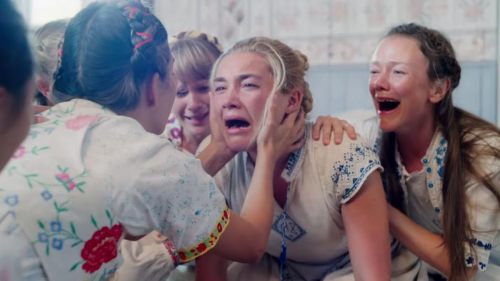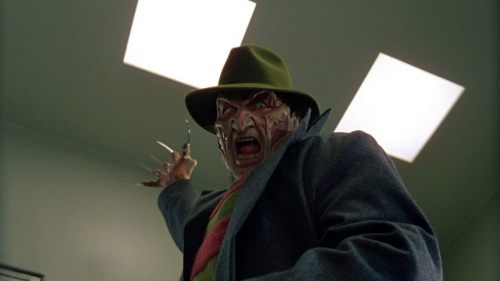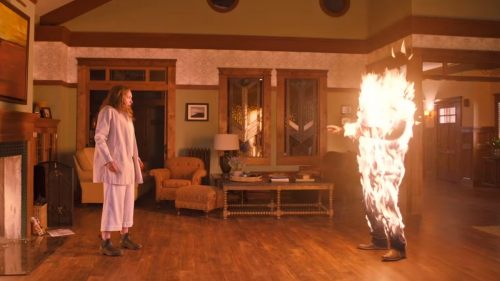Are Horror Sequels On The Way Out?
Over this past weekend, Rings, the new entry in the U.S. franchise based on Hideo Nakata’s J-horror classic Ringu movies, opened to an underwhelming estimated $13 million at the box office. It was outdone by the third weekend of M. Night Shyamalan’s Split, an indication that genre audiences prefer original fare to sequels—and far from the only one in recent months.
Earlier this year, Underworld: Blood Wars opened to a disappointing $13.6 million—two-thirds of what the original did way back in 2003—and will wind up with half the gross of the previous entry, 2012’s Underworld: Awakening. A week ago, Resident Evil: The Final Chapter posted an almost identical figure in its first weekend, and looks likely to wrap below the $30-million mark, a first for the series (though admittedly, it’ll turn a profit thanks to big grosses in Asia). Last fall, Blair Witch, which straddles the line between sequel and remake, couldn’t match the take of the much-maligned Book of Shadows: Blair Witch 2 16 years earlier. Even Ouija: Origin of Evil, which was about 100 times better than its predecessor and did turn a solid profit, marked a 30 percent drop from the original Ouija. Meanwhile, Split is just the latest in a string of fresh scare fare to hit big, following Don’t Breathe, Lights Out, The Shallows and others.
There were exceptions in the past year, but they felt more justified. The Conjuring 2 tapped another real-life paranormal case investigated by the ghostbusting Ed and Lorraine Warren and gave the proceedings a refreshing change of scenery. And The Purge: Election Year was perfectly timed to tap the growing furor surrounding the contentious 2016 Presidential campaign. But was anyone really asking for another adventure of Samara, whose mode of transportation (the VHS cassette) is now thoroughly outmoded? Was there actually anything left to say about Selene and the vampire/Lycan war? And if you’re going to do The Final Chapter of something, shouldn’t you make it at least a teensy bit different from the previous five films—and not end it with the promise/threat of yet another sequel? Those are the kinds of questions that producers and studios may well—and hopefully will—be asking in the coming months.
Horror sequels, of course, are a tradition as old as Hollywood. After Universal had hits in the early 1930s with Dracula, Frankenstein, The Mummy et al., the studio cranked out dozens of follow-up features, eventually bringing the fiends together in flicks like House of Frankenstein and eventually acknowledging that the trend had expired by sending it up in Abbott and Costello Meet Frankenstein. In the ’50s and ’60s, history repeated itself as Hammer Films gave full-color life to the classic creatures in new franchises. During the 1980s and early ’90s, you couldn’t walk into a theater without tripping over the latest Halloween, Friday the 13th, Nightmare on Elm Street or Child’s Play/Chucky flick.
So while fright franchise flicks will never truly go away, fans can hold out hope that we’ll be seeing less of them in the coming years. In the eyes of the studios, it’s a simple matter of economics. Don’t Breathe, Lights Out and Split combined cost less than Resident Evil: The Final Chapter, and audiences clearly felt more inclined to explore those three movies’ fresh territory than to take another trip to Raccoon City. The money men might also be encouraged to take more chances with the filmmakers: M. Night Shyamalan’s star had fallen hard a few years back, but given a shot with the low-budget The Visit, he came back strong and now has another $100-million-plus-grosser in Split. Not long ago, Jordan Peele was far from the first person you’d expect to helm a horror hit; now, his Get Out (opening February 24) looks like a sure thing, riding a raft of raves from Sundance and a trailer that has people buzzing. Starting with the directors’ vision, rather than cashing in on past successes, would seem to be the way to go.
Trends take a little time to take root in the film business, and it’ll be a couple of years before we see the fruits of the current box-office events. 2017 may decidedly determine the future of horror sequels, as various distributors are gambling on people wanting to see new chapters of Amityville, Saw, Insidious and Annabelle. The one that holds the most promise, in both financial and artistic terms, is currently known as 2017 Cloverfield Movie and set to open October 27. Last year, Paramount and producer J.J. Abrams took a risk with 10 Cloverfield Lane, retrofitting an original script as a follow-up to the found-footage monster hit—which could have turned off fans seeking a direct sequel and alienated those who saw it as an opportunistic cash-in. Instead, the reviews and audience response were strong (and that’s another factor: it helps when the films are good) and the grosses were high. Abrams and co. are approaching these movies with the sort of shared-theme idea John Carpenter and co. wanted to launch with Halloween III: Season of the Witch, and if there must be sequels, this feels like the right way to go.



